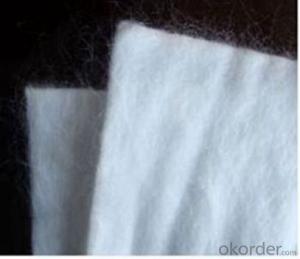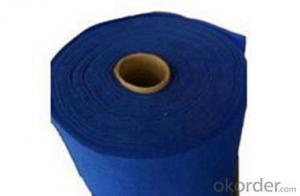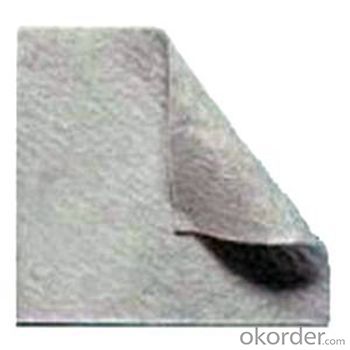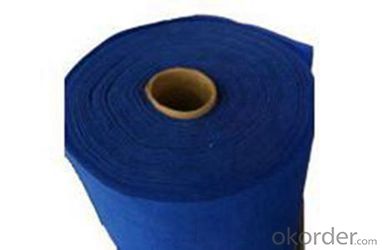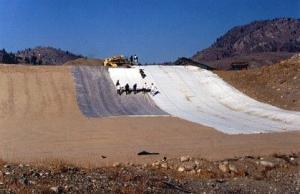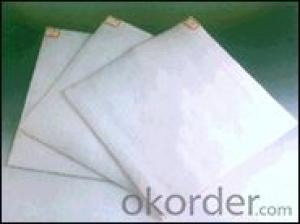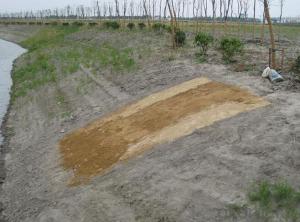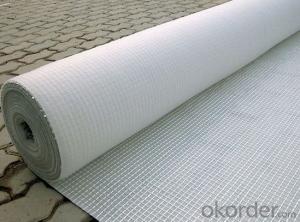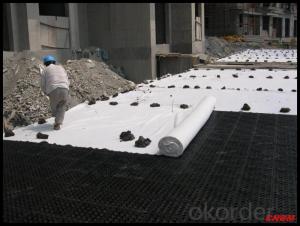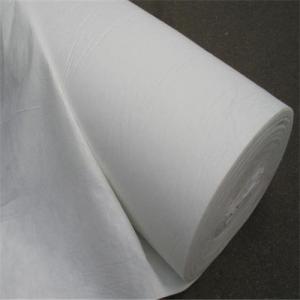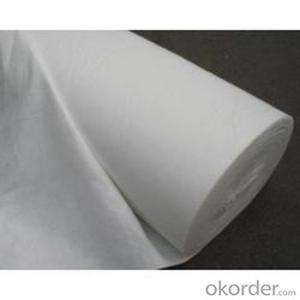Geotextile Ket 9 Polypropylene PP Nonwoven Geotextile Fabric for Road Construction
- Loading Port:
- China main port
- Payment Terms:
- TT OR LC
- Min Order Qty:
- 4000 m²
- Supply Capability:
- 1000000 m²/month
OKorder Service Pledge
OKorder Financial Service
You Might Also Like
Specification
Product Description:
Nonwoven Geotextile Fabric for Road Construction Geotextile
Polyester Nonwoven Geotextile Professioal Waterproof Geotextiles. A woven geotextiles is an economical solution for any civil engineering applications.Made from PP (polypropylene) or PET (polyester) short fiber by nonwoven needle punched manufacturing process, it has isolation, filtration, drainage, reinforcement, protection and maintenance etc. function. It separates, stabilizes, and reinforces soils and allows for filtration Woven geotextiles are manufactured by extruding polypropylene film and then slitting the film into individual yarns which are then woven to form the geotextiles.
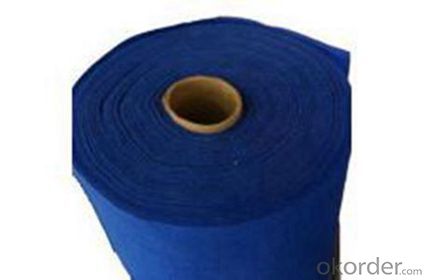
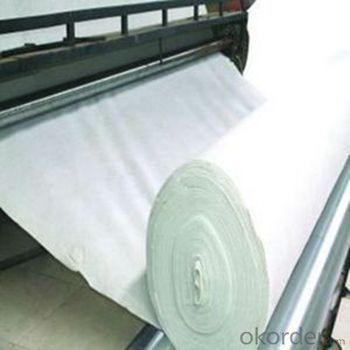
After-sales service
1.In order to provide customers with comprehensive technical support,we will provide technical and other related information upon request in a timely manner.
2.In required,we will appoint specialized technicians to the construction site to give technical trainings to construction people,and offer technical guidance throughout the whole construction process.
3.For damage due to shipment and delivery,after we receive the complaint,we will check the issure through provided pictures and videos.If our responsibility is confirmed,we wil offer free replacement.
4.When the construction is completed,as your request,our technical staff may participate in the final acceptance.
FAQ:
Q: What kind of payments does jenor support?
A: T/T, L/C, Cash are accepted.
Q: Do you charge for the samples?
A: Accordeing to our company policy, the samples are free, we only charge the freight fee. And we will return the freight fee during the next order.
Q: Can you produce according to customers' design?
A: Sure, we are professional manufacturer, OEM and ODM are both welcome.
Q: Do you have other products?
A: Yes, please check the pictures:
Packaging & Shipping
Packing: PLASTIC FILM INSIDE, AND WOVEN BAG OUTSIDE
Shipping: About 15 days after receipt the deposit
geotextile fabric
permeability,filtration,easy for construction
ISO and CE certificate
Good quality and competitive price
- Q: What is the role of permeability in geotextiles?
- The role of permeability in geotextiles is to allow the passage of water while preventing the migration of soil particles. By maintaining a high permeability, geotextiles facilitate proper drainage and filtration, preventing the buildup of excess water and ensuring the stability and longevity of the surrounding soil and structures.
- Q: Can geotextiles be used in pond liners?
- Yes, geotextiles can be used in pond liners. Geotextiles are often used as a protective layer in pond liners to provide additional strength, durability, and resistance to punctures or tears. They help prevent the migration of soil particles and provide stability to the liner, making them a suitable choice for pond construction.
- Q: Can geotextiles be used in railway track stabilization?
- Yes, geotextiles can be used in railway track stabilization. Geotextiles provide reinforcement and separation functions, preventing the mixing of materials and improving the stability of the track. They can help distribute loads, reduce deformation, and enhance the overall performance and lifespan of the railway track.
- Q: How do geotextiles help with reinforcement of geogrid reinforced embankments?
- Geotextiles help with reinforcement of geogrid reinforced embankments by acting as a separation layer between the soil and the geogrid. They prevent the intermixing of different soil layers, thereby maintaining the stability and integrity of the embankment. Additionally, geotextiles enhance the drainage capabilities of the embankment by allowing water to pass through while retaining the soil particles. This helps in reducing the potential for erosion and maintaining the long-term performance of the embankment.
- Q: How are geotextiles tested for durability?
- Geotextiles are typically tested for durability through a variety of methods such as tensile strength tests, puncture resistance tests, abrasion tests, and exposure to environmental conditions such as UV radiation and moisture. These tests assess the ability of geotextiles to withstand the stresses and strains they may encounter in their intended applications and ensure their long-term performance.
- Q: What are the specifications for geotextiles in erosion control projects?
- The specifications for geotextiles in erosion control projects typically include factors such as the material type, strength and durability, permeability, and installation requirements. It is important for geotextiles used in erosion control to be made of high-quality materials that can withstand environmental conditions and provide effective soil stabilization. The strength and durability of geotextiles should be capable of withstanding the forces exerted by flowing water and soil particles. Additionally, the permeability of geotextiles should allow for proper water drainage while preventing soil erosion. Proper installation techniques, such as overlap and anchoring, are also important specifications to ensure the geotextiles effectively control erosion.
- Q: How do geotextiles help with moisture management in construction projects?
- Geotextiles play a crucial role in moisture management in construction projects by acting as a barrier against water infiltration, allowing excess water to drain away while retaining sufficient moisture for the construction materials.
- Q: 300g geotextile GB thickness is how much
- There are a variety of geotextiles. If it is non-woven, then upstairs said correct. If it is woven type, that is not right, it should be about 1mm.
- Q: Road overhaul of the original concrete pavement after shaving asphalt, anti-cracking is geotextile or geogrid more
- To see the specific situation, the general use of grille, I am specializing in the production of geotechnical materials
- Q: 1 square of non-woven geotextiles how many tons
- Do you ask how many grams / square of non-woven geotextiles how much a ton? At present, the price of geotextile is subject to fluctuations in the impact of raw materials, the specific price needs to be priced seven days before the purchase. Geotextile manufacturers in the Swiss Zhang Ming Chao answer for you.
Send your message to us
Geotextile Ket 9 Polypropylene PP Nonwoven Geotextile Fabric for Road Construction
- Loading Port:
- China main port
- Payment Terms:
- TT OR LC
- Min Order Qty:
- 4000 m²
- Supply Capability:
- 1000000 m²/month
OKorder Service Pledge
OKorder Financial Service
Similar products
Hot products
Hot Searches
Related keywords
